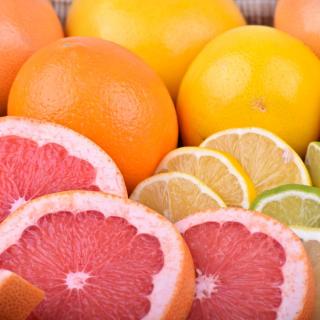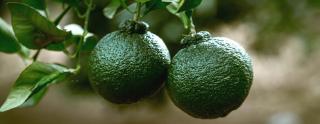

Citrus are magnificent fruit trees native to Asia and introduced to Europe by the Arabic civilization. From there, they spread to America.
Like the orange tree, lemon tree and kumquat, most of the time citrus have evergreen leafage and only grow directly in the ground in regions where the winter climate is mild.
Grown for example in the Mediterranean area, they are more and more commonly found on our terraces, decks and patios, which makes them very trendy nowadays.
In cooler regions, they’re grown in pots, so that they can be brought out of the freezing cold over winter.
There is of course the lemon tree, the orange tree, the clementine and the pomelo tree which produces grapefruit.
Additionally, you can find kumquat, also called Fortunella margarita, which produces cute tiny fruits to savor.
Lastly, the only citrus suitable for indoor growing inside a heated house or apartment in winter is the calamondin.
 Areas that border the sea in Mediterranean type climates like the American South-East and South-West coasts are very well suited for cultivating citrus plants.
Areas that border the sea in Mediterranean type climates like the American South-East and South-West coasts are very well suited for cultivating citrus plants.
There, they can be planted outdoors without much risk.
Full sun exposure is important for best fruit-bearing.
Further North, if you inhabit a region where it doesn’t freeze, you can plant them in the ground on the condition that they be well protected from wind and in a space well endowed with sunlight.
If it does freezes in your area, favor potted growing or growing in garden boxes and bring your citrus inside an unheated lean-in for instance, which will be quite cool in winter but won’t freeze and endanger them.
The variety best suited to growing indoors is calamondin, which is an indoor orange tree that can stay in the same room year-round.
Potted growing as an indoor plant for the other citrus plants isn’t problematic either, except that they must spend winter in a cooler room.
Refer to our guidance on how to best care for your potted citrus lemon tree and orange tree. In fact, for other citrus plants, the guidelines are almost exactly the same.
Citrus bear fruits from November to May, except for lemon trees which can bear fruit all year round.
Indoors, fruit formation is much more difficult. As your experience grows in caring for your citrus, you’ll end up getting better at obtaining fruits from your plants.
You can prepare cuttings and layering (August is best for this).
More or less every 2 years, in the month of March.
Prune lightly to renew the vigor of your citrus plants.
As an example, look at what it takes to prune finger lime, a particularly thorny variety.
 Scale insects – techniques and organic treatments to avoid them (more general information on scale)
Scale insects – techniques and organic treatments to avoid them (more general information on scale)Read also:
Most species have thorns, but you can cut them off at any time. This helps protect fruits, but it also makes caring for the tree much more comfortable!
.leaves on my calamondino citrus mitis orange tree has very sticky substance on them any answeres please.
Hi Drew, sticky substance on any kind of citrus leaves is almost certainly the result of either scale insects or aphids. If it turns blackish, it’s a sign of sooty mold – no need to worry about the mold though: it will disappear once you’ve dealt with the pest causing the stickiness.
Love this web page. I did not know that orange and lime trees require full sun and lots of water. I wondered why since they have lots of blooms, they hardly ever have fruit. Now I am going to move them to a place where they can get full sun and make sure they get enough water.